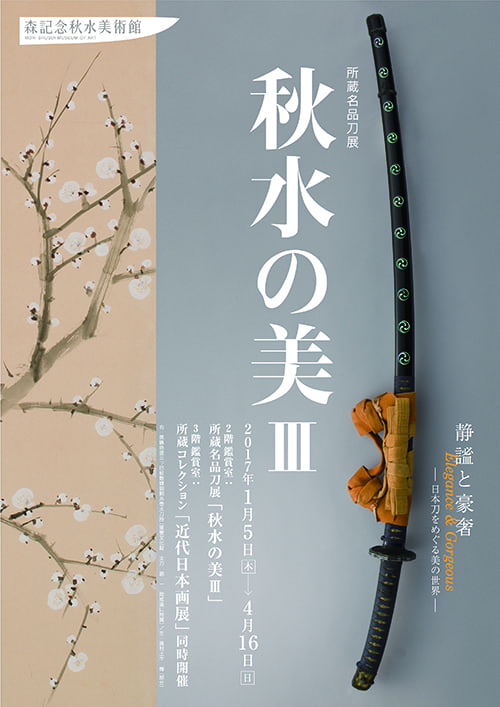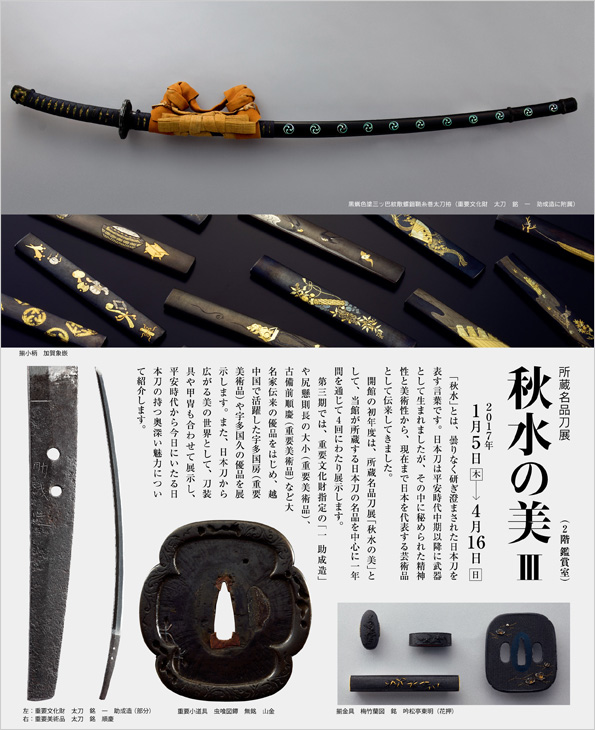“Shusui,” literally “autumn water,” is a term used to describe the pure, unclouded shine of polished Japanese swords. Though they were first produced as weapons back in the mid Heian period (10th and 11th c.), over time, the latent spirituality and artistic beauty of swords led them to be considered works of art that are representative of Japan, even today.
For our first year open, the museum is holding a four-part Shusui Beauty exhibit, with a focus on truly superb swords from the museum’s collection.
This third session features such daimyo (feudal lord) family heirlooms as a sword signed “Ichi Sukeshige Zou” (“Made by Ichi Sukeshige”; Important Cultural Property), a daisho (set of long and short swords worn by samurai) by Shikkake Norinaga (Important Art Object), and a sword by Junkei of the Ko-Bizen (Old Bizen) school (Important Art Object). The exhibition also includes a sword made by Uda Kunifusa and designated an Important Art Object, and a sword by Uda Kunihisa; both of these swordmakers were active in Etchu Province (modern-day Toyama Prefecture). In addition to swords, the collection on display features related items like sword fittings and armor, for an excellent look at the incredible beauty of the world of swords, from the Heian period (late 8th to 12th c.) through the present day.





 Back
Back